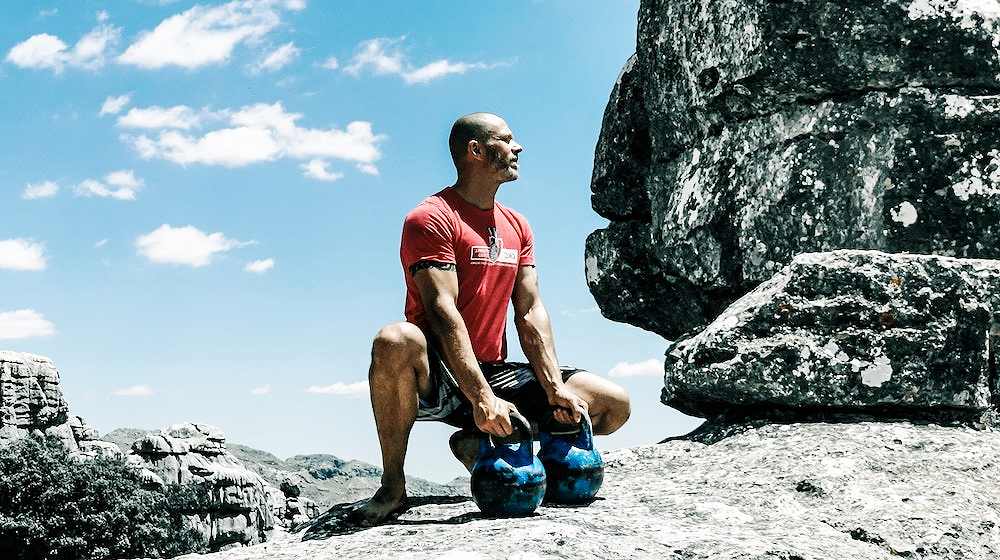Muscle imbalance is more common than you think. It's also a lot more preventable than you can imagine. And prevention is easier than cure.
Have you ever noticed that your right hand may be able to carry more groceries than your left? Or did you ever feel like your right arm is unable to keep up with your left arm in your workouts? You may be experiencing muscle imbalance.
In this article:
RELATED: 5 Simple Core Exercises for Seniors
Ways to Prevent Muscle Imbalances That Everyone of All Ages Should Do
What Is Muscle Imbalance?

Muscle imbalance is when you have uneven strength between different muscle groups.
Our joints are shrouded in muscle groups that help achieve a full range of motions. The overuse of one muscle group can lead to the under-use of another, causing a muscle imbalance. You may notice that when you execute overhead presses with a barbell, your right side may effortlessly press upward while your left side struggles.
Even exercising incorrectly can cause this. Working out isn't as simple as training our arms, chests, and legs. We need to recruit all muscles in the arms (e.g. triceps, biceps, forearms, etc.) on training sessions, never leaving one group behind.
In fact, even daily activities we never pay any mind to may lead to imbalance. Thankfully, simple corrective measures and some lifestyle changes may help prevent even reverse it.
How to Prevent Muscle Imbalance
1. Proper Posture

Roll your shoulders back, straighten your shoulders, and keep your chin up. Keeping proper posture may help unnecessarily flexing or contracting certain muscle groups. With poor posture, you may be keeping your muscles contracted for long, which may have a negative impact on your joints.
Slouching could also cause lower back pain and neck pain.
When you work a desk job, you may want to raise the top of your monitor is at eye level. Raise your phone to eye level when you use it to help prevent slouching and looking down for extended periods of time.
If you find keeping your back straight a bit straining, consider core exercises. Core exercises help maintain balance and stability to your movements.
2. Balance Your Left and Right Sides

By now, you may be more aware that you favor one side over the other. Daily tasks such as opening doors or carrying our bags have a gradual effect over muscle imbalance.
You may train your less dominant side or weaker muscles even through mundane, day-to-day activities. This will also help you realize which joints or muscle groups you need to work most on.
Take note that muscle imbalance isn't just a matter of a stronger dominant versus less dominant side. It's also possible to have a stronger bicep and weaker tricep.
3. Work Out With a Full Range of Motions

Combine strength, endurance, and mobility training in your workout programs. The best way to engage unused muscles is to do full mobility exercises that will make sure you activate all muscle groups as opposed to unilateral workouts.
However unilateral workouts may come in handy when you're working on reversing muscle imbalance. To correct this, your trainer may target or single out your weaker or less used muscles to build their strength.
Overly repetitive movements may contribute to muscle imbalance. It's important to incorporate different movements and muscles into your workouts over doing multiple reps of a single joint.
Having underdeveloped muscles in your shoulders or legs may result to a smaller range of movements. You may improve your flexibility by doing dynamic stretching exercises after resistance and mobility exercises.
You may also want to explore using a foam roller. Studies suggest that self-myofascial release using foam rollers may help improve muscle performance and mobility.
4. Focus on Proper Form

Each workout is designed to target specific muscle groups. While proper form guarantees we hit just that muscle group and do it safely.
By working out with poor form or posture, you may end up overworking certain muscles and under-developing others. Even worse, you may end up with an injury.
You may want to work out in front of a mirror so that in addition to feeling yourself recruit the correct muscles, you see if you're maintaining proper form. Drop the shoulders, keep your back straight, only lift with your legs.
Perfecting your form takes practice and the guidance of a licensed and well-trained trainer.
5. Get Up

We've discussed mobility training in addition to strength and resistance training. Bottomline – it's key to be moving at all.
If you live a sedentary lifestyle (e.g. desk job, work that involves long drives, etc.), try to fit in some small exercises in your schedule.
Start off your day at the gym or end the day with yoga. Try to get up every hour and make a quick round in the office before resuming to work. Stop at the gas station and stretch your legs.
Under-using one muscle group also means under developing other muscles. This is because all our muscle work together to perform movements.
You don't use it, you lose it.
6. Work It Out

If you're already feeling that a certain muscle group is weaker, work it out.
As previously mentioned, your trainer may help you identify and workout muscle groups that need to be developed.
You may begin with the weaker side before you move on to your more developed, dominant side or muscles. This may help you gauge the variance in strength as well as observe the improvement more carefully.
7. Carry Weights Based on Strength

You will also be using weights fitted to the strength of your lesser developed muscles. For example, if your dominant can carry 15 kilos, your left may carry only 10 kilos.
Maintain the same number of reps on your weaker side as with your stronger side.
At this point, you should maintain the muscle mass on your dominant side while your weaker side catches up.
Causes of Muscle Imbalance
1. Naturally Favoring One Side

It's quite unavoidable. We natural one side more than the other, with some being right-handed and others being left-handed.
As mentioned, even daily tasks can cause muscle imbalance. Crossing your legs, carrying your bag on one side, or even sleeping on a particular side daily may contribute to it.
Just do your best to be conscious of these menial tasks and it may help prevent muscle imbalance.
2. Sedentary Lifestyle

As said earlier – you don't use it, you lose it.
Take the longer route to the office, or choose the stairs instead of the elevator or escalator. Take the long way to your desk from the entrance if it's possible.
Try to engage in active hobbies like running or yoga. If you want to sign up at a center or gym, make sure to sign up with a trainer that understands your needs and knows how to cater to them.
3. Poor Training Program

It's important to emphasize the significance of a good trainer. A great trainer will be able to design a program made for you and your body. Unfortunately, it's hardly a one size fits all situation.
A suitable program for you will take into consideration what muscles you need to develop and what your personal goals are. It will also incorporate an effective combination of strength, resistance, mobility, endurance, and flexibility training.
Muscles are a system and are not an isolated instrument. They were in conjunction with each other, and this must be taken into consideration in a well-balanced training programs.
4. Incorrect Exercise Form

Improper form may stress the incorrect muscles and cause overexertion or even injury.
Especially when lifting heavy weights, ensure that you maintain proper form and posture. It may help to work out in front of a mirror to properly monitor your form. An even better way to learn and maintain good form – exercise with a certified trainer.
Disclaimer: If muscle imbalance is of great concern to you, please consult a medical professional. This article is for information purposes only and should not be taken as medical or professional advice.
Muscle imbalance is commonplace, but sometimes goes unnoticed. While it's not a critical condition, it may lead to injury and muscle pain.
Fortunately there are simple steps and lifestyle changes we can apply immediately to prevent or help reverse it.
Are you more aware of your posture now? Have you made certain lifestyle changes or were you already poised to maintain well-balanced muscles? Let us know what you're doing to prevent muscle imbalance in the comments section below!
UP NEXT:
- How To Build Your Endurance And Stamina
- Kegel Exercises For Men: Step-by-Step Guide And Benefits
- Penis Exercises to Pump Up Your Sex Life
Calling all crafting Health Buffs! If you’ve got the gift of keeping healthy and sharing this knowledge through writing, Click here if you want to write for us.
Please stay connected with us on Facebook, Twitter, Instagram, and Pinterest, and make sure to join our community of healthy living and minded people here.
Trending
Tongue Color | 7 Scary Tongue Color Meanings
Lecithin Benefits and Side Effects: 10 Surprising Truths
Get Updates
SIGN UP FOR OUR NEWSLETTER TODAY

10 Erectile Dysfunction Exercises to Keep Your Manhood Healthy


